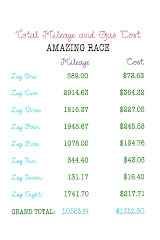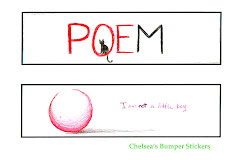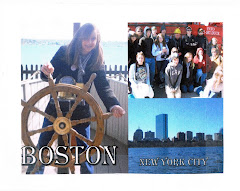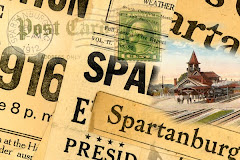
On the literary map, you are still in New York City, New York.
Calculate:
# _____________ Miles to New York City, New York
$ _____________ Cost for Gasoline to New York City, New York
Visit Walt Whitman at www.Poets.org and fill-in-the-blanks.
"Born on __________________, Walt Whitman was the second son of Walter Whitman, a housebuilder, and Louisa Van Velsor. The family, which consisted of nine children, lived in _______and _________ in the 1820s and 1830s. At the age of ____________, Whitman began to learn the printer's trade, and fell in love with the written word. Largely ______________, he read voraciously, becoming acquainted with the works of ________, _________, __________, and the Bible."
"Whitman worked as a printer in New York City until a devastating fire in the printing district demolished the industry. In 1836, at the age of ____, he began his career as __________ in the one-room school houses of Long Island. He continued to teach until _____________, when he turned to ___________ as a full-time career. He founded a weekly newspaper, ____________, and later edited a number of Brooklyn and New York papers. In 1848, Whitman left the Brooklyn Daily Eagle to become editor of the New Orleans Crescent. It was in New Orleans that he experienced at first hand the ____________________________ of that city. On his return to Brooklyn in the fall of 1848, he founded a 'free soil' newspaper, the ______________________man, and continued to develop the unique style of poetry that later so astonished Ralph Waldo Emerson."
"In 1855, Whitman took out a __________on the first edition of _______________, which consisted of twelve untitled poems and a preface. He published the volume ___________, and sent a copy to __________________ in July of 1855. Whitman released a second edition of the book in 1856, containing ______________ poems, a letter from Emerson praising the first edition, and a long open letter by Whitman in response. During his subsequent career, Whitman continued to _________ the volume, publishing several more editions of the book."
"At the outbreak of the Civil War, Whitman vowed to live a ___________________life. He wrote freelance journalism and visited the wounded at New York-area hospitals. He then traveled to Washington, D.C. in December 1862 to care for his brother who had been wounded in the war. Overcome by ______________________ in Washington, Whitman decided to stay and work in the hospitals and stayed in the city for ____________ years. He took a job as a clerk for the Department of the Interior, which ended when the Secretary of the Interior, James Harlan, discovered that Whitman was the author of Leaves of Grass, which Harlan found offensive. Harlan __________. Whitman struggled to support himself through most of his life. In Washington, he lived on a clerk's salary and modest royalties, and spent any excess money, including gifts from friends, to buy _________________________________. He had also been sending money to his widowed mother and an invalid brother. From time to time writers both in the states and in England sent him 'purses' of money so that he could get by."
"In the early 1870s, Whitman settled in ___________, where he had come to visit his dying mother at his brother's house. However, after suffering a stroke, Whitman found it impossible to return to Washington. He stayed with his brother until the 1882 publication of Leaves of Grass gave Whitman enough money to buy a home in Camden. In the simple two-story clapboard house, Whitman spent his declining years working on additions and revisions to a new edition of the book and preparing his final volume of poems and prose, Good-Bye, My Fancy (1891). After his death on ___________________, Whitman was buried in a tomb he designed and had built on a lot in Harleigh Cemetery."
Visit Mrs. Steller's Whitman Gallery.
Listen to Whitman read "America." (Audio Clip: This is a 36-second wax cylinder recording of what some believe to be Whitman's voice reading four lines from the poem "America.")
Listen to "Crossing the Brooklyn Bridge," Section 3-10.
In your travel journal, explain how listening to these poetry selections affect you differently, and perhaps more fully, than your merely reading them.
Calculate:
# _____________ Miles to New York City, New York
$ _____________ Cost for Gasoline to New York City, New York
Visit Walt Whitman at www.Poets.org and fill-in-the-blanks.
"Born on __________________, Walt Whitman was the second son of Walter Whitman, a housebuilder, and Louisa Van Velsor. The family, which consisted of nine children, lived in _______and _________ in the 1820s and 1830s. At the age of ____________, Whitman began to learn the printer's trade, and fell in love with the written word. Largely ______________, he read voraciously, becoming acquainted with the works of ________, _________, __________, and the Bible."
"Whitman worked as a printer in New York City until a devastating fire in the printing district demolished the industry. In 1836, at the age of ____, he began his career as __________ in the one-room school houses of Long Island. He continued to teach until _____________, when he turned to ___________ as a full-time career. He founded a weekly newspaper, ____________, and later edited a number of Brooklyn and New York papers. In 1848, Whitman left the Brooklyn Daily Eagle to become editor of the New Orleans Crescent. It was in New Orleans that he experienced at first hand the ____________________________ of that city. On his return to Brooklyn in the fall of 1848, he founded a 'free soil' newspaper, the ______________________man, and continued to develop the unique style of poetry that later so astonished Ralph Waldo Emerson."
"In 1855, Whitman took out a __________on the first edition of _______________, which consisted of twelve untitled poems and a preface. He published the volume ___________, and sent a copy to __________________ in July of 1855. Whitman released a second edition of the book in 1856, containing ______________ poems, a letter from Emerson praising the first edition, and a long open letter by Whitman in response. During his subsequent career, Whitman continued to _________ the volume, publishing several more editions of the book."
"At the outbreak of the Civil War, Whitman vowed to live a ___________________life. He wrote freelance journalism and visited the wounded at New York-area hospitals. He then traveled to Washington, D.C. in December 1862 to care for his brother who had been wounded in the war. Overcome by ______________________ in Washington, Whitman decided to stay and work in the hospitals and stayed in the city for ____________ years. He took a job as a clerk for the Department of the Interior, which ended when the Secretary of the Interior, James Harlan, discovered that Whitman was the author of Leaves of Grass, which Harlan found offensive. Harlan __________. Whitman struggled to support himself through most of his life. In Washington, he lived on a clerk's salary and modest royalties, and spent any excess money, including gifts from friends, to buy _________________________________. He had also been sending money to his widowed mother and an invalid brother. From time to time writers both in the states and in England sent him 'purses' of money so that he could get by."
"In the early 1870s, Whitman settled in ___________, where he had come to visit his dying mother at his brother's house. However, after suffering a stroke, Whitman found it impossible to return to Washington. He stayed with his brother until the 1882 publication of Leaves of Grass gave Whitman enough money to buy a home in Camden. In the simple two-story clapboard house, Whitman spent his declining years working on additions and revisions to a new edition of the book and preparing his final volume of poems and prose, Good-Bye, My Fancy (1891). After his death on ___________________, Whitman was buried in a tomb he designed and had built on a lot in Harleigh Cemetery."
Visit Mrs. Steller's Whitman Gallery.
Listen to Whitman read "America." (Audio Clip: This is a 36-second wax cylinder recording of what some believe to be Whitman's voice reading four lines from the poem "America.")
Listen to "Crossing the Brooklyn Bridge," Section 3-10.
In your travel journal, explain how listening to these poetry selections affect you differently, and perhaps more fully, than your merely reading them.



















